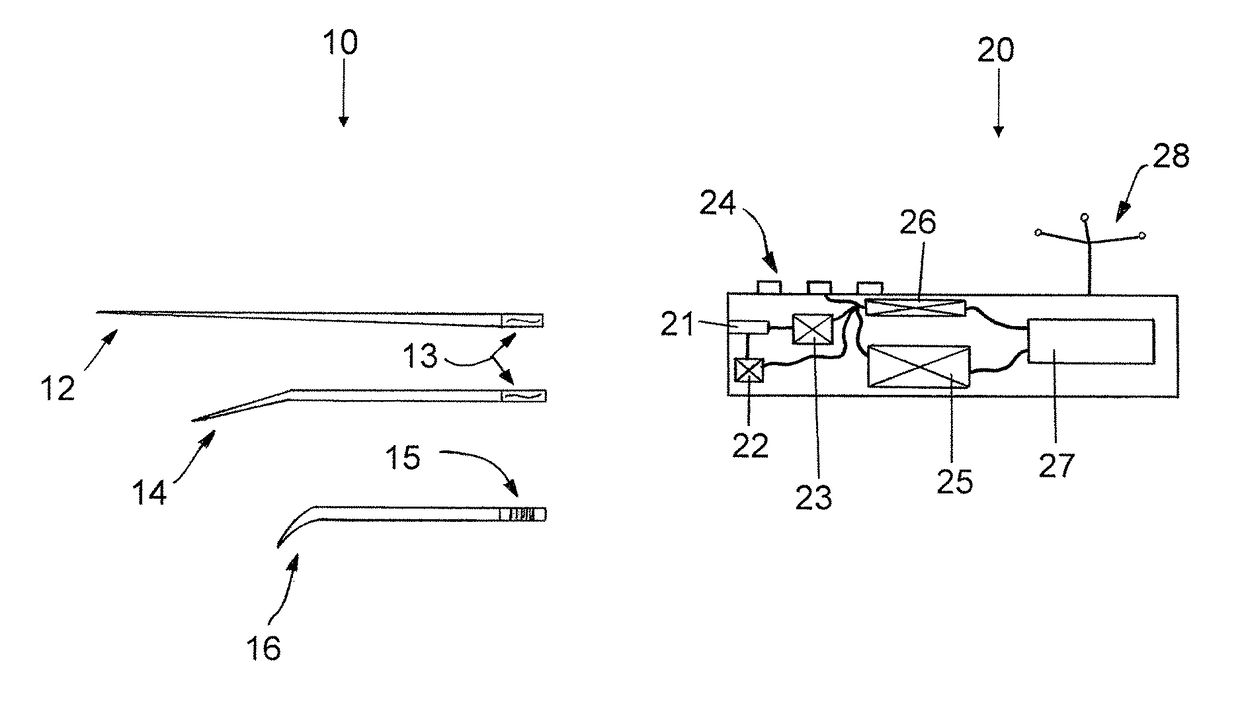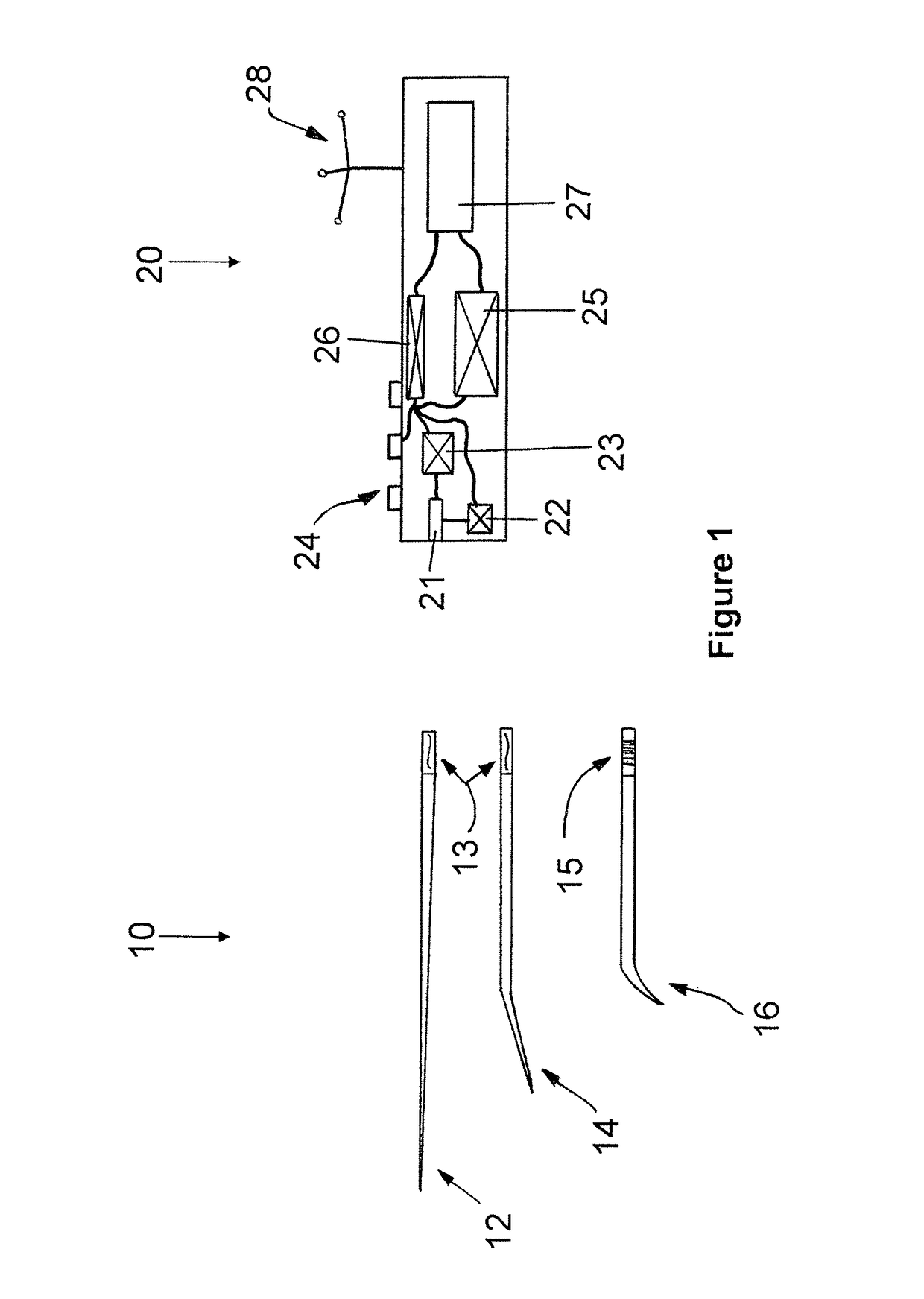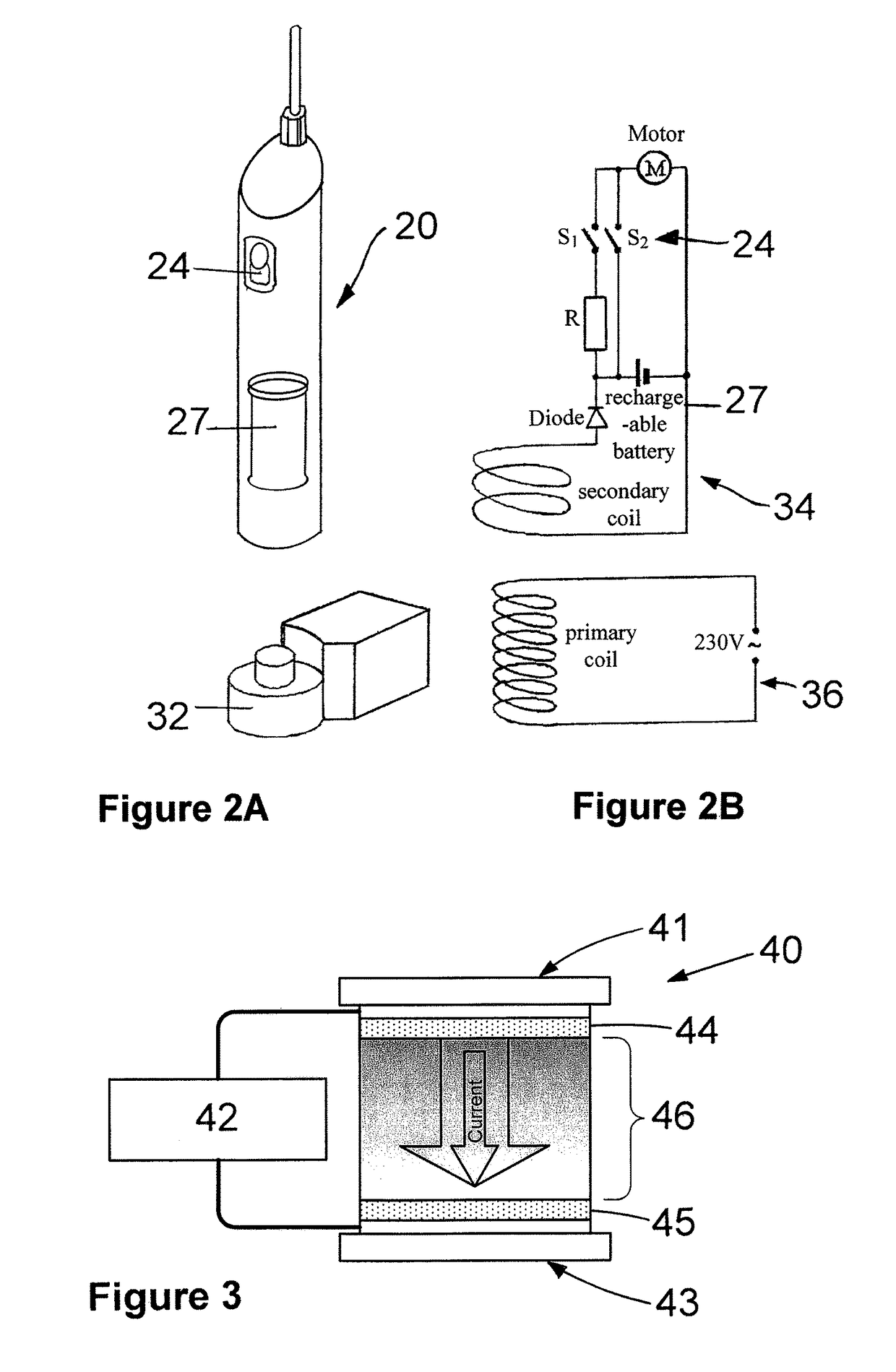Surgical instrument, in particular pointer instrument, comprising tip sensor
a technology of pointer and tip sensor, which is applied in the field of surgical instruments, can solve the problems that the use of such an instrument with a navigation system is in most cases still very operatively intensive, and achieve the effect of simple and user-friendly handling with a medical navigation system
- Summary
- Abstract
- Description
- Claims
- Application Information
AI Technical Summary
Benefits of technology
Problems solved by technology
Method used
Image
Examples
Embodiment Construction
[0032]FIG. 1 shows different alternatives of a surgical instrument, i.e. comprising different tips 12, 14, 16 (wherein the reference sign 10 is also used as a whole for the tip in general) and a handle portion 20. The tips can be different tips for a surgical pointer, wherein the tip 12 is a long straight tip, the tip 14 is a tip comprising an angled front part and the tip 16 is a rounded tip. All the tips have a fastening portion at the end opposite their front end, and in the case of the tips 12 and 14, this fastening portion 13 is formed as a key shape portion. The instrument tip 16 has a fastening portion 15 which has been provided with an engraved or imprinted barcode. The fastening portions 13, 15 serve on the one hand to fasten the tip to the handle, and on the other hand to identify the tip and to provide data, i.e. shape data, concerning the tip. Thus, the key portion 13 can comprise this data by mechanical shaping, while in the barcode of the portion 15, the data is accomm...
PUM
 Login to View More
Login to View More Abstract
Description
Claims
Application Information
 Login to View More
Login to View More - R&D
- Intellectual Property
- Life Sciences
- Materials
- Tech Scout
- Unparalleled Data Quality
- Higher Quality Content
- 60% Fewer Hallucinations
Browse by: Latest US Patents, China's latest patents, Technical Efficacy Thesaurus, Application Domain, Technology Topic, Popular Technical Reports.
© 2025 PatSnap. All rights reserved.Legal|Privacy policy|Modern Slavery Act Transparency Statement|Sitemap|About US| Contact US: help@patsnap.com



